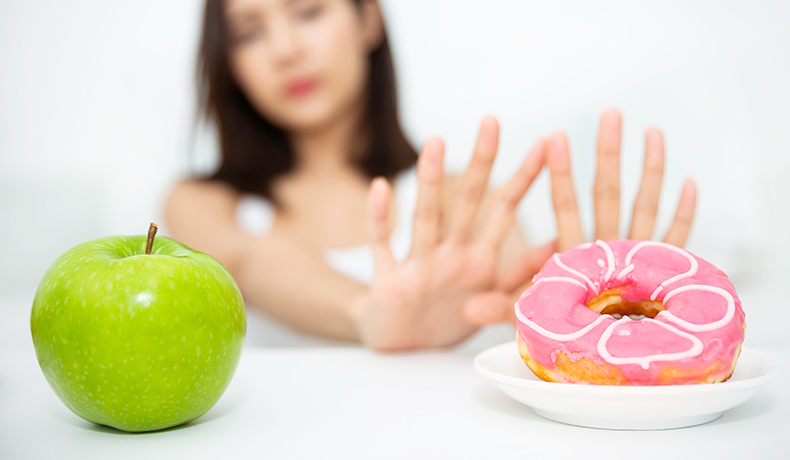
The Sweet Stuff
The sweet stuff. The stuff that quietly rests on everyone’s kitchen counter, usually in a subtle vintage jar ready for those who’d like to add a little ‘zing’ to their morning coffee. The stuff you’d happily lend a neighbor, never expecting it back in return. The stuff that, in the wise words of Mary Poppins, makes the medicine go down in the most delightful way.
Sugar.
It’s been around for as long as we can all remember and much longer than that! First appearing in India some 2,500 years ago, it made its way both east and west to China and Persia reaching the Mediterranean by around the 13th century. Now, sugar has managed to find its way into almost every single household in America, in some form or another.
Now, for the record, we’re talking about table/granulated/refined/added sugar, or sucrose. Found in the stems of sugar cane, or the roots of sugar beet; the refining process of sugar is relatively simple: check it out below!


And it’s using this process that the world currently produces 180 million metric tonnes annually. Working out to over one metric tonne for every male in the USA, every year.
That’s a lot of sugar!
In the mid 20th century, sugar was advertised as a kind of health food. With ‘fat’ as enemy number one, sugar swooped in to save the day helping those with their between-meal cravings, and mid-afternoon energy slumps. One ad evens went as far as to say: Sugar helps keep your appetite down, your energy up – and – helps you slip safely past the ‘’fat time of day.’’
Thankfully, with plenty of reputable studies taking place over the last half-century, the truth about sugar and its effects on one’s health has since come to light. We all now know that sugar is not quite a health food; in fact, quite the contrary.
You see, when we eat sugar it is rapidly broken down into glucose by enzymes in the small intestine. That glucose is then released into the bloodstream where it is either used immediately for energy or, with the help of insulin (secreted from the pancreas when a higher amount of blood glucose is present), is transported to cells in our muscle tissue and organs to be stored for later use. However, these multiple, regular quick insulin spikes can lead to numerous health problems over time. Insulin resistance and prediabetes have been linked to those who suffer from obesity, live an inactive lifestyle, and have a diet high in added sugar.
In a 2014 study published by JAMA Internal Medicine, results found that those who consumed 17% to 21% of their daily calories from added sugar had a 38% higher risk of suffering cardiovascular disease than those who only consumed 8% of their daily calories from added sugar. Higher blood pressure, weight gain, inflammation, and fatty liver disease were also linked to those who consumed higher amounts of added sugar.
We’re not trying to scare you off sugar completely! Like with most things in life, there’s nothing wrong with healthy moderation. The American Heart Association recommends no more than 6% of your daily calories should come from added sugars. Which works out to about 6 teaspoons per day for women and 9 teaspoons per day for men (there are about 9 teaspoons of sugar in a single can of coke). But don’t forget, this applies to multiple forms of added sugar, such as:
- brown sugar
- corn syrup
- corn sweetener
- high-fructose corn syrup
- honey
- invert sugar
- malt sugar
- molasses
Added sugar is not an essential part of our diet (neither is pizza, unfortunately), and less-refined, healthier sugars can be found everywhere in fruits and vegetables. Due to the high fiber content of fruits and vegetables, the sugar is broken down much more slowly in the small intestine, leading to more gradual insulin releases and longer-lasting bouts of energy. However, stripping the fruit of its fiber (when creating a fruit juice), would create a similar problem found with a soft drink. Stick to whole fruits and veggies or pulpy smoothies!
As added sugar is not an essential part of our diet, why not try a small ‘no sugar challenge’? The rules couldn’t be simpler, and you’ll find that once your body adjusts a little, your energy levels will be higher and more stable than before!
The rules:
Absolutely no added/refined sugar is allowed, this includes anything in the bullet-pointed list above! If any of those sugar forms appear in the ingredient list of a product, don’t buy it! Of course, some foods don’t have an ingredients list, so there’s no harm in doing a quick Google search, or asking the waiter!
If in doubt, go without.
Some Tips:
- Whole fruits and berries are 100% okay, so use them as your new sweet fix. You’ll be surprised at how much some strawberries can crush your sugar cravings.
- Many dark chocolates (usually those above 80%) don’t contain sugar and are loaded with antioxidants, so why not get your chocolate groove on?
- Be careful with products that advertise themselves as sugar-free, they may contain nasty artificial sweeteners.
- Go natural! Aim to fill your diet with whole fruits, vegetables, berries, whole grains, beans, legumes, pulses, nuts, seeds, eggs, lean meats, fish, coffee, tea, and water. You’ll be stuffed without out even thinking of the ‘S’ word.
Of course, you don’t have to go completely cold turkey. Start with no added sugar during the week, or aim for the maximum daily amount the American Heart Association recommends. It’s a start, and you’ll definitely be healthier for it.
Next time someone offers you sugar for your coffee, give them a wink and say the classic line ‘No thank you, I’m sweet enough’.
Imagery Source: https://www.sugar.org/sugar/refining-processing/
Sources:
https://www.health.harvard.edu/heart-health/the-sweet-danger-of-sugar
https://www.heart.org/en/healthy-living/healthy-eating/eat-smart/sugar/added-sugars
